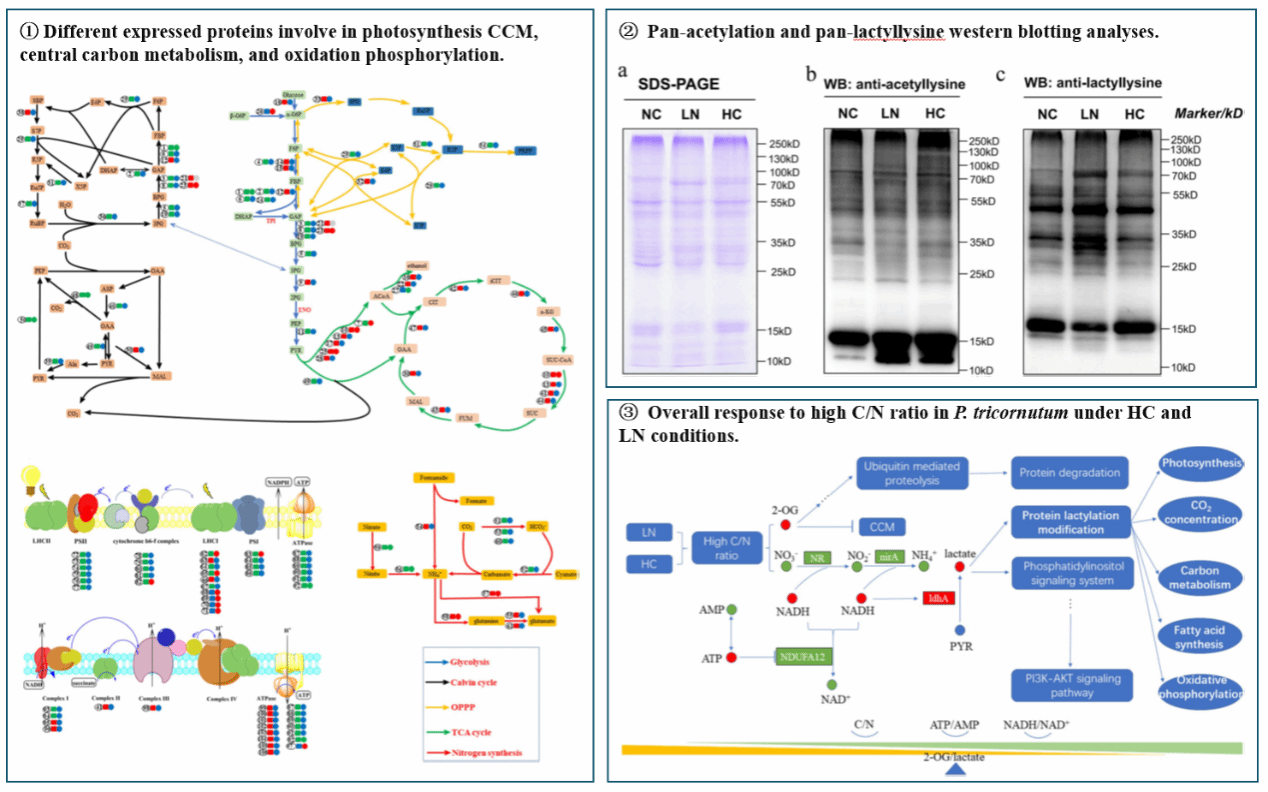
Abstract:
Background: Phaeodactylum tricornutum accumulates lipids while the growth also increases under high CO2, shedding light on its potential application in the reduction of CO2 emissions and at the same time acquiring biodiesel raw materials. However, the sensing and transducing of high C: N signals and the related response mechanism(s) remained unknown.
Results: In this study, a multiple omics analysis was performed with P. tricornutum under low nitrogen (LN) and high CO2 (HC) conditions. The results indicated that 2-oxoglutarate was significantly increased under both LN and HC. Meanwhile, proteins involved in carbon concentration mechanism decreased, indicated that 2-oxoglutarate might regulate C: N balance through suppressing carbon fixation. Lactate, which acts in energy metabolism, signal transduction, and ‘LactoylLys’ modification on proteins, was the most up-regulated metabolite under both LN and HC conditions. Meanwhile, proteins involved in carbon, nitrogen and energy metabolisms were significantly regulated. Western blotting analysis suggested that non-histone L-lactylation modification was enhanced under LN and HC. Moreover, lactylated proteins were enriched in photosynthesis, central carbon metabolism, nitrogen metabolism, fatty acid synthesis and oxidative phosphorylation.
Conclusion: It is suggested that lactate might play important roles in energy homeostatic maintenance and C: N balance regulation in P. tricornutum through protein lactylation modification.
全文链接地址:https://biotechnologyforbiofuels.biomedcentral.com/articles/10.1186/s13068-022-02152-8